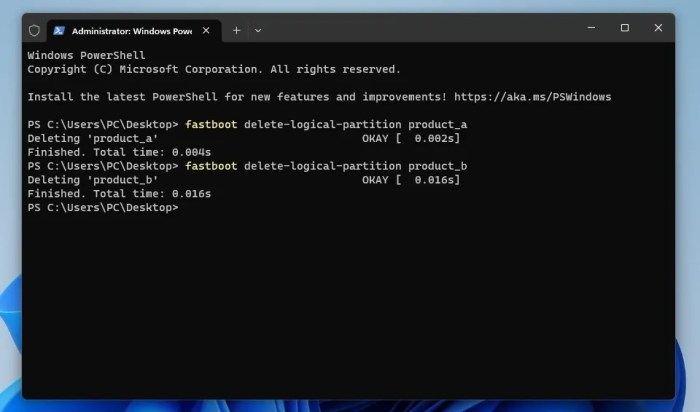
Menginstal Custom Rom Di Android Untuk Meningkatkan Performa
Menginstal Custom ROM Di Android Untuk Meningkatkan Performa? Wuih, asyik banget! Bayangin aja HP-mu jadi kayak motor balap, ngebut tanpa kendala! Custom ROM itu kayak baju baru buat Android-mu, bisa bikin tampilannya kece badai dan performa jadi jauh lebih gahar. Mau tau gimana caranya? Simak terus, ya!
Artikel ini akan memandu kamu langkah demi langkah, mulai dari persiapan hingga optimasi setelah instalasi. Kita akan bahas apa itu Custom ROM, jenis-jenisnya, proses instalasi, hingga solusi kalau ada masalah. Jadi, siap-siap bikin HP-mu makin joss!
Custom ROM: Level Up Your Android Game

Yo, what’s up, Android peeps? Think your phone’s feeling a little, uh,
-slow*? Like, totally lagging behind? Then get ready to ditch that stock ROM and unleash the power of a custom ROM! This guide’s gonna walk you through everything you need to know to boost your Android’s performance, from installing a custom ROM to troubleshooting any issues that pop up.
Let’s dive in!
Pengertian Custom ROM dan Manfaatnya untuk Performa Android
Aight, so what’s a custom ROM, anyway? It’s basically a modified version of Android’s operating system. Think of it as a supercharged, tweaked-out version of what came pre-installed on your phone (the stock ROM). Stock ROMs are, like, the vanilla Android experience—pretty basic. Custom ROMs, on the other hand, offer a ton of customization options and often improved performance.
Installing a custom ROM can seriously boost your Android’s performance. You’ll often see improvements in speed, responsiveness, and even battery life. It’s like giving your phone a serious upgrade without buying a new one. Totally rad, right?
Some popular custom ROMs include LineageOS (known for its stability and features), Paranoid Android (focused on customization), and Pixel Experience (aiming for a stock Android feel with added features). Each one has its own perks. LineageOS is, like, the OG, super stable and reliable. Paranoid Android is all about customization, letting you tweak everything. Pixel Experience gives you that clean, Google-y feel, but with some extra goodies.
The difference in performance between a stock ROM and a custom ROM can be pretty dramatic. Custom ROMs often remove bloatware (those pre-installed apps you never use), optimize system processes, and allow for more granular control over system settings. This leads to faster boot times, smoother multitasking, and improved battery life in many cases. It’s a total game changer!
| Nama ROM | Fitur Unggulan | Kompatibilitas Perangkat | Keunggulan Performa |
|---|---|---|---|
| LineageOS | Stability, regular updates, extensive customization options | Wide range of devices | Improved speed, better battery life, smoother performance |
| Paranoid Android | Highly customizable UI, unique features like “Halo” notifications | Limited device compatibility | Enhanced responsiveness, improved multitasking |
| Pixel Experience | Stock Android experience with added features, regular updates | Many devices supported | Smooth performance, clean interface, efficient resource management |
Persiapan Sebelum Memasang Custom ROM
Before you jump into flashing a custom ROM, you gotta do some prep work. It’s like, seriously important. Skipping this step could totally brick your phone—and nobody wants that, right?
First things first: identify your device’s specs. You need to know the exact model number to find a compatible custom ROM. Then, back up all your data! This includes apps, contacts, photos—everything. Use a cloud service or connect your phone to your computer. It’s crucial to have a complete backup before you start.
Trust me on this one.
Next, download the necessary USB drivers for your device. This lets your computer communicate with your phone. The steps usually involve going to your phone manufacturer’s website, finding your device’s support page, and downloading the appropriate drivers. Super simple, but essential!
Finally, here’s a checklist to make sure you’re totally ready:
- Back up all your data
- Download the correct custom ROM for your device
- Download the necessary tools (like TWRP recovery)
- Download and install USB drivers
- Charge your phone to at least 80%
- Enable USB debugging on your phone
Proses Instalasi Custom ROM
Okay, time for the main event! This part requires some technical know-how, so pay close attention. We’re gonna be unlocking your bootloader and flashing the ROM using a custom recovery like TWRP (Team Win Recovery Project). This is where things get a little intense, so follow these steps carefully.
Step 1: Unlocking the Bootloader: This step varies depending on your phone’s manufacturer. Generally, it involves enabling developer options, enabling OEM unlocking, and then using fastboot commands on your computer. You’ll need to search for instructions specific to your device model.
Step 2: Flashing TWRP Recovery: Once your bootloader is unlocked, you’ll need to flash a custom recovery like TWRP. This is usually done using fastboot commands on your computer. Again, you’ll need specific instructions for your device model. The process involves booting into fastboot mode, connecting your phone to your computer, and using fastboot commands to flash the TWRP recovery image.
Step 3: Wiping Data (Factory Reset): Before flashing the ROM, you’ll need to perform a factory reset. This ensures a clean installation. Within TWRP, you’ll find options to wipe data, cache, and Dalvik cache. Make sure to select these options carefully. It’s crucial to wipe the data, cache, and Dalvik cache partitions before installing the ROM.
Step 4: Installing the Custom ROM: Navigate to the location where you saved the custom ROM zip file within TWRP. Select the file and swipe to begin the installation process. This will take some time. The process involves selecting the ROM zip file from the TWRP menu, confirming the installation, and waiting for the process to complete. During installation, you’ll see progress bars and messages on the screen.
Step 5: Reboot: Once the ROM is installed, reboot your phone. The first boot might take a little longer than usual. Once your phone boots up, you’ll be greeted by the new custom ROM. It’s important to note that the first boot can take significantly longer than subsequent boots.
Troubleshooting Masalah Umum Setelah Instalasi, Menginstal Custom Rom Di Android Untuk Meningkatkan Performa
Even with careful preparation, you might run into some snags. Don’t freak out! Let’s tackle some common issues.
Bootloops are, like, the worst. They happen when your phone gets stuck restarting endlessly. This is often caused by an incompatible ROM or a problem during the installation process. The solution often involves reflashing the ROM or trying a different one. If you’re still stuck, you might need to seek help from experienced users in online forums.
Apps not working? That’s another common issue. Sometimes, apps aren’t compatible with the new ROM. Try clearing the app’s cache and data, or reinstalling it. If that doesn’t work, you might need to find an alternative app.
Sometimes, incompatibility with specific apps is a known issue with particular ROMs.
Internet connection problems? Make sure you’ve configured your APN settings correctly after flashing the ROM. You might also need to check your phone’s settings for any network-related issues. Incorrect APN settings are a common cause of connectivity problems after installing a custom ROM.
| Masalah | Penyebab | Solusi |
|---|---|---|
| Bootloop | Incompatible ROM, installation error | Reflash ROM, try different ROM, seek help in online forums |
| Aplikasi tidak berfungsi | App incompatibility, corrupted app data | Clear app cache/data, reinstall app, find alternative app |
| Masalah koneksi internet | Incorrect APN settings, network configuration issues | Check APN settings, troubleshoot network settings |
Pengoptimalan Performa Setelah Instalasi Custom ROM

Okay, you’ve got your custom ROM installed—awesome! But you can still tweak things to get even better performance. Think of this as fine-tuning your ride for peak performance.
After installing a custom ROM, optimizing your system is key. This involves managing apps, uninstalling unnecessary ones, and using a lightweight launcher. Regularly clearing your cache and data can also help. A good starting point is to identify and uninstall apps you don’t use, this frees up space and improves performance.
Using a custom kernel can also give you a performance boost. Custom kernels often offer better CPU and GPU management, leading to improved speed and battery life. However, this requires more advanced knowledge and can sometimes cause issues if not done correctly. Always research thoroughly before installing a custom kernel.
There are also system optimization apps that can help, but use them wisely. Some can be resource-intensive themselves, so choose carefully. Examples include Greenify (for hibernating apps), and SD Maid (for cleaning up system junk).
Here are a few recommended system optimization apps:
- Greenify: Hibernates apps to save battery and improve performance.
- SD Maid: Cleans up system junk files and improves storage space.
- AccuBattery: Monitors battery usage and provides insights into battery health.
Ringkasan Akhir: Menginstal Custom Rom Di Android Untuk Meningkatkan Performa

Nah, itulah dia, proses instalasi Custom ROM untuk meningkatkan performa Android-mu. Gak susah kok, asal teliti dan sabar. Setelah berhasil, rasakan sensasi kecepatan dan performa HP-mu yang jauh lebih mantap. Jangan lupa selalu backup data pentingmu ya, sebelum melakukan modifikasi apapun di sistem Android-mu. Selamat mencoba dan semoga berhasil!


